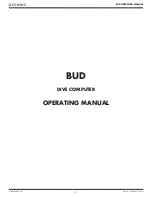
UMPIOXR400V2-7-1EN, 2012-07-01
49
11 Output Options
11.4.4 Definition of the Triggering Condition
When the source item is selected, the triggering condition of the status output can be defined, i.e. the condition that
has to be fulfilled to trigger the output. Three alarm functions are available. They are listed in Tab. 11.2.
The hysteresis is a symmetrical range around the limit in which fluctuation is permitted. The output will be triggered
when the measuring value reach the upper limit of this range and when the measuring value fall below the lower
limit.
11.4.5 Setting of the Triggering Period
It is possible to trigger the status output as soon as the defined condition is met. It is also possible to trigger the out-
put only when the condition has been met without interruption for a certain predefined period of time.
When the input value in the scroll list is preceded by a question mark,
no input is configured for the measurement of this value. If an input
value is selected preceded by a question mark, a warning message
will be displayed.
If the source item type
SENSOR VALUES
is selected, select the source
item in the scroll list. Press ENTER.
Tab. 11.2: Alarm functions
alarm function
description
MAXIMUM (x>trig)
The status output will trigger when the source item exceeds a certain maximum value.
MINIMUM (x<trig)
The status output will trigger when the source item falls below a certain minimum value.
SOURCE ERROR
The status output will trigger when the source item is not valid.
Example:
In the example given above, the function needed can be reached by selecting the alarm type
MAXI-
MUM (x>trig)
for the status output.
HIGH LIMIT
of the output should be set to 30 °.
Select the alarm function. Press ENTER.
If
HIGH LIMIT
or
LOW LIMIT
is selected as alarm function, enter
now the maximum or minimum value for the source item. Note that the
signs of the source item and of the limit will be considered. Press
ENTER.
It is now possible to define an hysteresis for the status output. This
function is useful to avoid a constant triggering of the output by mea-
sured values fluctuating around the limit.
Example:
If a variation of 0.5 °Brix about the upper limit is allowed, set the hysteresis to 0.5 °Brix for the 30
°Brix limit. The alarm will trigger at 30.5 °Brix and at 29.5 °Brix. Small fluctuations around 30° Brix
do not have any effect on the alarm.
Select
YES
to activate the alarm immediately. Select
NO
to activate
the alarm only after the switching condition has been met for a certain
period of time. Press ENTER.
W A R N I N G : U N L I N K E D
? F l u i d t e m p .
S e n s o r v a l u e s
R e f r a c t i v e i n d e x
R 1 : f u n c t i o n
M a x i m u m ( x > t r i g )
H i g h L i m i t
2 2 . 5 % m a s
H y s t e r e s e :
0 . 5 % m a s
I n s t a n t l y t r i g . ?
n o > Y E S <
















































